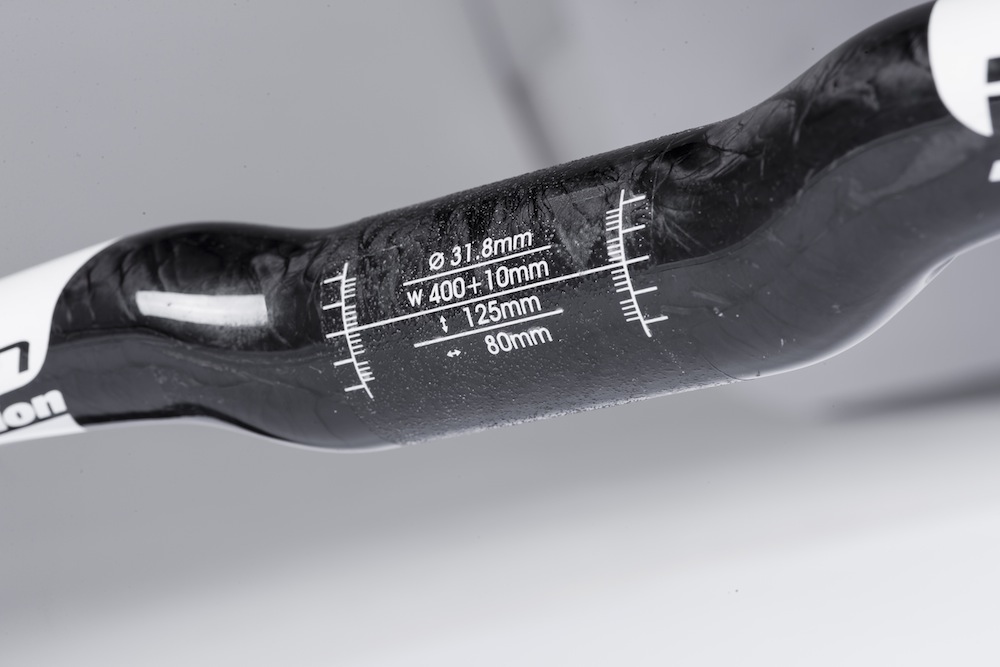Vision Metron 4D Compact handlebar review
The Vision Metron 4D is a carbon-fibre handlebar designed to make your bike lighter and more aerodynamic

A very stiff and good-looking aero handlebar. What it lacks in aggressive aerodynamic shaping it makes up for with well-thought-out ergonomics.
-
+
Very ergonomic shapes
-
+
Comfortable to ride with
-
+
Generous holes for cable routing
-
+
Stiff
-
-
Not the most aerodynamic shape
You can trust Cycling Weekly.
The Vision Metron range is largely aimed at improving aerodynamics and has a bias towards the time trial and triathlon market. However it seems like its 4D aero road handlebar has a slightly different emphasis.
Ergonomics have been prioritised over aerodynamics: the shape of bars is very complex and has clearly had a lot of thought put into it.
The tops are not the most aggressive or thinned out. Instead Vision has designed a shape which is slightly more oval than a standard round tube without sacrificing any comfort. In fact as there is a noticeable rise to the tops, which gives a more upright riding position – useful when climbing.

>>> Handlebar tape and how to wrap it like a pro
There is a 10° forward bend to the Vision Metron 4D handlebars which noticeably pushes the shifters forwards, changing their position when compared to a straight bar. For anyone who is particular about their riding position this may mean changing to a shorter stem as the effective reach becomes longer. However if ‘long and low’ is what you’re looking for then these may be the bars for you.
Watch - handlebar reach and how to get it right
Other features include a flattened section behind the hoods. I like this shaping, as the flattened section behind the shifters gives a solid feel when riding in an aero position on the hoods, with the groove giving a stable base to rest your wrists or hands in.
The latest race content, interviews, features, reviews and expert buying guides, direct to your inbox!
The Vision Metron 4D gave an impressively stiff and solid feel for a full carbon handlebar with ‘aero’ tubes. There was none of the flex that is sometimes present in bars with thinner top sections. The narrowed tube section of the drops gives a delicate and nimble feel when sprinting. The drops also have a 2° outwards flare. This flaring out gives a wider hand position and so more leverage when sprinting.

With regard to weight, the Metron 4D weighs 240g, which is the same ballpark as the ENVE SES aero bar, although the ENVE is roughly £60 more expensive. If you were to choose a lighter, slightly less aero alternative, the Fizik 00 bar is around £270 and weighs just 175g.
The bar has a continuous carbon composite construction which was immediately noticeable and translates into a really confident feel when cornering and sprinting. Cables can be integrated and hidden through holes. Some bars I have tested in the past, such as the ENVE SES, have had holes which are a little too small, making routing cables rather difficult. Fortunately the holes on the Vision Metron 4D are generous, meaning fitting and routing the cables was straightforward. It also helps keep a neat, clean and aero look.
Oliver Bridgewood - no, Doctor Oliver Bridgewood - is a PhD Chemist who discovered a love of cycling. He enjoys racing time trials, hill climbs, road races and criteriums. During his time at Cycling Weekly, he worked predominantly within the tech team, also utilising his science background to produce insightful fitness articles, before moving to an entirely video-focused role heading up the Cycling Weekly YouTube channel, where his feature-length documentary 'Project 49' was his crowning glory.